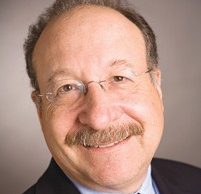When it comes to commercial real estate and investing in commercial property, Tom Parker is just about the smartest guy in any room, anywhere.
He also happens to be a most congenial person; he has an “everybody wins” attitude that is refreshingly constructive.
In recent weeks, Parker, who heads the Hutton Parker Foundation in Santa Barbara, has put his affable personality and keen eye for property out in public with new book.
Called “The $100 Million Secret: Why (and How) Foundations Should Invest in Community instead of Wall Street,” this slim volume chronicles how the Hutton Parker Foundation doubled its assets between 1998 and 2012 while creating a home for dozens of nonprofit organizations on the South Coast.
Parker and his co-author, Michael Bowker, make an impassioned plea for community foundations or standalone foundations in other communities to dump their Wall Street advisors and take up the calling of creating cost-effective, long-term homes for local nonprofits.
In this Main Street vs. Wall Street contest, Main Street, for once, comes out on top. “The $100 Million Secret” underscores how right Parker is right on many counts, and there are signs that other foundations are beginning to follow his method.
But a close reading also raises questions about how far commercial real estate investments could or should take a large community-based giving organization.
It is clear that for timing, Parker is something close to a Zen master. The period from 1998 to 2012 was marked by two stock market bubbles, events that triggered some of the weakest performance for stocks of any period since the Great Depression.
It is also possible to argue that South Santa Barbara County commercial real estate, along with possibly diamonds, and Warren Buffett’s holding company, Berkshire Hathaway, are distinct asset classes unto themselves, i.e. able to hold their value in almost any market imaginable.
Which raises the first key question: Can Parker’s success be replicated by a less skilled investor working in a less affluent, more volatile property market?
Another question involves the tax status of nonprofits. When a property moves from commercial or for-profit ownership to a nonprofit or foundation it comes off the tax rolls. Each time that happens a tiny portion of the fundamental tax base that finances schools and other public uses disappears. Healthy nonprofits hiring more staff do offset the loss of tax base somewhat, but this is not a risk-free transaction. How much of a shift would materially affect the tax base, particularly in a state such as Colorado, where commercial property bears a huge part of the tax load?
And finally there is this dilemma: Once a nonprofit has a permanent home, how does it keep from making sure the problems it was established to solve actually get permanently solved? From homelessness to domestic violence to mental health, we are very good at creating institutions to “solve” these problems but the institutions persist and so do the problems. Is that success or mission creep?
There is no doubt that Parker was prescient in acquiring properties for his foundation that financed new homes or upgrades to the Rescue Mission, Legal Aid Foundation, Santa Maria Valley Discovery Center, Direct Relief International, Guadalupe-Nipomo Dunes Center and many others. Recently it helped refinance a loan for the Santa Barbara Neighborhood Clinics, preserving an important piece of the medical safety net for low income citizens.
When it comes to replication, it is worth noting that Ventura County Community Foundation jumped on the property acquisition bandwagon when it acquired a Camarillo property near the Camarillo Ranch center off Flynn Road. That Nonprofit Center is now home to VCCF, plus Interface Children and Family Services and 211 Ventura County, United Way, Gold Coast Veterans Foundation and others.
Along the way to its successes in commercial real estate, Hutton Parker Foundation created an eco-system that supports the nonprofit community. It has property managers, real estate agents and contractors all working in partnership to help nonprofits operate at low cost — making their donated funds go farther.
More than once, Parker has made a loan to a nonprofit with the understanding that in order to get paid back, some changes in the business fundamentals of the group would change.
Just as the so-called “Greenspan Put” bolstered Wall Street for a lot of the past decade, so the “Parker Put” has helped dozens of nonprofits during the sometimes difficult years of the 21st Century.
That is no small accomplishment.






 Print
Print Email
Email

















